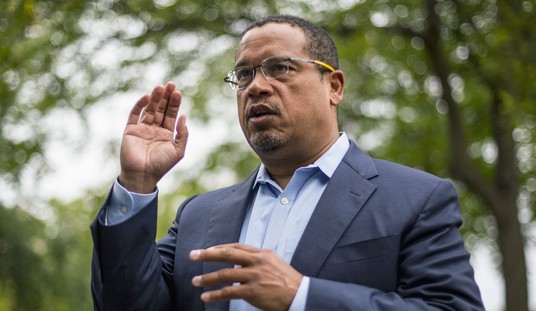How much more likely is unclear, but still. Read this smart, well-researched piece by Nate Cohn challenging the conventional wisdom that there are no more white votes to be had by the GOP and therefore Trump is stuck somehow picking off minority support from Hillary if he’s going to win. Not true, says Cohn. Long-term it’s true that a candidate who appeals almost exclusively to whites is a sure loser in a national election, but there’s good reason to think that the national exit polls in 2012 understated how many white working-class voters showed up to vote that year — and, critically, how many of them broke for Obama. Those voters are Trump’s bread and butter. What if he flips a bunch of them to the GOP in November?
That’s a big “if,” though, as you’ll see if you read his piece. Here’s the key table showing how far the exit polls that year were out of whack with other analyses of the make-up of the electorate from the census and a Democratic voter file. There’s no telling which one is right, but the census and voter file are at least as credible as the exit polls — and each of them saw a higher share of blue-collar white votes out there in 2012:

If the electorate was whiter and less educated than everyone thought, it means that Obama didn’t win because of his avalanche among Latinos. He won because, outside the south, he won a higher share of the white working-class vote than the exit poll would have you believe — 34 percent, not 25 percent, according to Cohn’s model based on data from various sources. Assuming that’s true, Trump could do major damage to Clinton simply by flipping a chunk of that vote even if he does no better than Romney did among minorities. Which seems feasible: Trump/Hillary is a much tougher match-up for Democrats among blue-collar whites than the stiff, out-of-touch white-collar guy Romney was against Obama. In fact, Trump’s margin over Hillary among working-class whites is already several points greater than Romney’s was over Obama in the final 2012 polls. Not only that, but Cohn’s data-crunch shows that there was also a cohort of white voters who stayed home in 2012 and whose support this year could further pad Trump’s totals. If he can turn them out and cut into Hillary’s share of Obama’s blue-collar white support, he’s in business.
But there are caveats. Big ones. Turns out that group of whites who stayed home four years ago was mostly … Democratic, especially young Democrats. That’s not a core Trump constituency, to put it mildly. Many of those “missing” white voters also lived outside of battleground states, meaning that even if they end up turning out for Trump, they’re probably doing little more than affecting the margins in states that are already destined to go blue or red. Similarly, cutting into the share of working-class whites won by Obama in 2012 only helps Trump if it happens in battleground states, and only if he also manages to maintain Romney’s level of support among college-educated whites. There’s already been an 11-point swing towards Democrats among college-educated whites between the exit polls then and the election polls now. Obviously you’re no closer to winning if you gain a factory worker’s vote while losing a professional’s. And of course, there’s always the chance that even if Trump wins a bigger chunk of working-class whites than Romney did, Hillary will counter by turning out more minority voters and/or winning a bigger share of them than Obama did. That’s a heavy lift, but that’s why O’s endorsing her today and eager to hit the trail for her soon. He wants the “Obama coalition,” and then some, out there for her this fall. Amy Walter of the Cook Political Report recently used a model of her own to estimate that Trump will need fully 70 percent of working-class whites to win if the college-educated white vote splits evenly and minority turnout is steady from 2012. Needless to say, the more Clinton overperforms in those last two metrics, the harder it’ll be for Trump to find a path — even if he’s outperforming Romney among blue-collar whites himself.
Anyway. Read the whole piece, especially if you’re anti-Trump and skeptical of his chances. As Sean Trende says, don’t let what you want to be true obscure your understanding of reality. Exit question: Assuming Cohn is right, that Trump could win simply by pandering effectively to working-class whites, what does that do to our assessments of whether attacking the judge in the Trump U case was smart? It’s tempting to call it a shrewd move on the theory that lower-class whites will appreciate his refusal to be politically correct (“The people are tired of this political correctness when things are said that are totally fine” is how Trump defended his attacks on the judge in an interview with the Times.) Remember, though: The more he bleeds support from college-educated whites and antagonizes minorities, the greater the risk that they’ll break for Hillary, canceling out his gains among the white working class. Isn’t he better off sticking to blue-collar economic anxieties, which minority voters can relate to and college-educated whites can sympathize with, than mumbling about the “Mexican” in his civil suit?








Join the conversation as a VIP Member